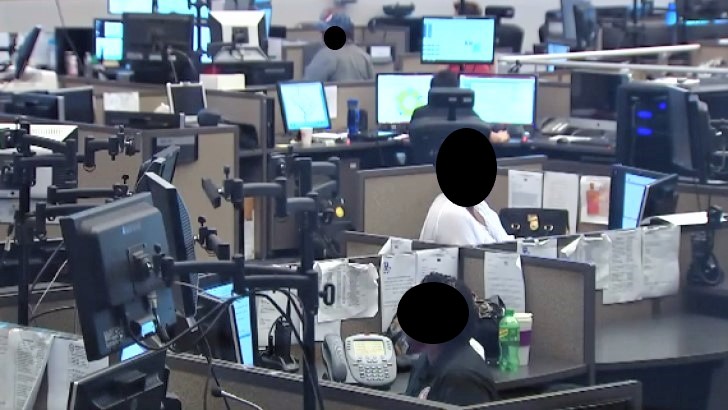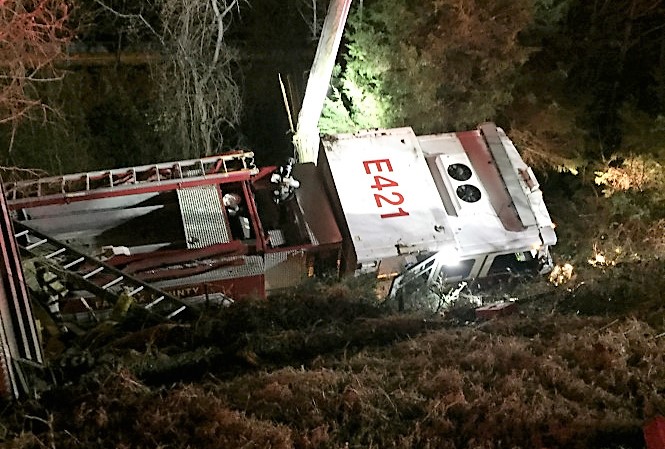NEW: DC 911 had right address for dying teen at its fingertips but ignored it
11 minutes lost when call-taker bypassed correct location on computer screen while dealing with panicked 911 caller. Fire & EMS sent to 3 wrong locations for shooting victim.

Looking for a quality used fire truck? Selling one? Visit our sponsor Command Fire Apparatus
Eleven minutes were lost Thursday when DC 911 sent fire, EMS, and police to three wrong addresses after a teenaged boy was shot and killed. STATter911 has learned an automated location data platform used by the Office of Unified Communications (OUC) accurately and instantly identified the address where the shooting occurred — an apartment at 4443 E Street SE. According to District of Columbia government sources, a 911 call-taker ignored the computer screen with the correct information and focused on trying to get the address from an extremely panicked 911 caller. That caller repeatedly gave the wrong address. Concerns about OUC’s failure to routinely trust and use location determining technology were cited as a key finding in last year’s audit of the agency.
Killed in the shooting was 17-year-old Kyle Richards. According to reporters Clarence Williams and Peter Hermann of The Washington Post, 26-year-old Shatiya Johnson has been charged with involuntary manslaughter. Johnson told police she was showing Richards her gun when it fired. Police say Richards was struck in the arm.
Multiple DC government sources provided information about this incident on the condition they would not be named. They are not authorized to speak publicly about this sensitive matter.
Timeline
A preliminary internal OUC investigation shows the 911 call was received at 5:08 p.m. The caller was described as hysterical and kept screaming “gun” and “hospital”. The caller said the address was 443 E Street SE multiple times. That address is on Capitol Hill more than four miles from the Benning Ridge neighborhood where the shooting occurred. The caller apparently once said 4443 E Street SE early in the call, but sources familiar with the call’s contents say the caller kept repeating 443 E Street SE. The call-taker provided CPR instructions as fire, EMS, and police were alerted.
Timestamped emergency radio traffic recorded by OpenMHz.com (above) shows DC Fire & EMS was initially dispatched to 443 E Street SE at 5:11 p.m. At 5:15 p.m., a dispatcher told units they’ve received a call for 443 E Street in Northeast. More units were sent to that address. At 5:17 p.m., a paramedic ambulance crew saw dispatch notes on a mobile terminal indicating a new address of 4443 E Street SE. It took two more minutes to confirm the correct address. During that time, an EMS supervisor said he was going to check 4443 E Street in Northeast. At 5:19 p.m. — eleven minutes after the initial call — DC Fire & EMS was finally dispatched to the correct address. Police arrived at the apartment at 5:21 p.m. They were followed a minute later by fire and EMS.
Only after DC Police and DC Fire & EMS arrived at the wrong locations was the call-taker able to confirm the correct address with the distraught caller.
In total, 11 DC Fire & EMS units were sent to the various locations. This includes two engine companies, two ladder trucks, three paramedic ambulances, one basic ambulance, and three EMS supervisors.
RapidSOS
When the call came in at 5:08 p.m. a screen in front of the call-taker immediately displayed the correct address of 4443 E Street SE. That screen is from a data platform known as RapidSOS. It uses location information from the caller’s smartphone and other data to pinpoint an address. The DC government sources familiar with the investigation say the call-taker immediately got out of the RapidSOS screen and concentrated on what the excited caller was saying. The investigation also found the call-taker missed important information from another screen. This was from OUC’s computer aided dispatch system. It displayed a map showing that the RapidSOS location and the address given by the caller were far apart. The sources say this should have been seen an indication of something wrong with the address that was being sent to fire, EMS, and police dispatchers. There’s no indication the call-taker took any action to reconcile the conflict between what the caller was saying and what the computer was showing.
Sources describe the call-taker as a good employee who admitted the mistakes. It’s expected the call-taker will be provided additional training as part of the disciplinary process.
Mistake fits DC Auditor’s findings
This failure to use RapidSOS fits a pattern highlighted in last year’s investigation of OUC by a contractor for the Office of the District of Columbia Auditor. The report by Federal Engineering, Inc. is titled, “District’s 911 System: Reform Needed To Meet Safety Needs.” One of its five key findings was “an inconsistent use of Location Determining Technologies (LDTs) by call-takers to locate callers or confirm location of reported events.”
The investigators found many DC 911 workers distrust map tools and LDTs. While this was at least partially blamed on technical concerns, the report made it clear call-takers generally did not use LDTs as a primary tool:

The report recommended OUC provide better training on LDTs along with “effective supervision” and quality assurance.
Timely DC Council hearing
Seven-hours before Thursday’s shooting, OUC Interim Director Cleo Subido testified about LDTs during a DC Council oversight hearing (above). Subido told Judiciary and Public Safety Committee Chairman Charles Allen that getting call-takers to overcome their reluctance and routinely use LDTs like RapidSOS is still a work in progress.
Subido has been the interim director for more than a year. Her reform efforts have focused on the issues outlined in the audit report and other long-standing problems. In trying to change the culture at the agency, Subido replaced many OUC supervisors and managers.
Subido told Allen that one of the challenges with LDTs is overcoming a bias that has developed among call-takers due to previous technology that wasn’t as accurate. In Subido’s response to the audit she wrote, “We will continue to stress the accuracy of these technologies to our call-takers to increase their confidence in this area.”
STATter911 contacted OUC on Thursday and again Monday with questions about this incident and the use of LDTs at DC 911. So far, there has been no comment.





